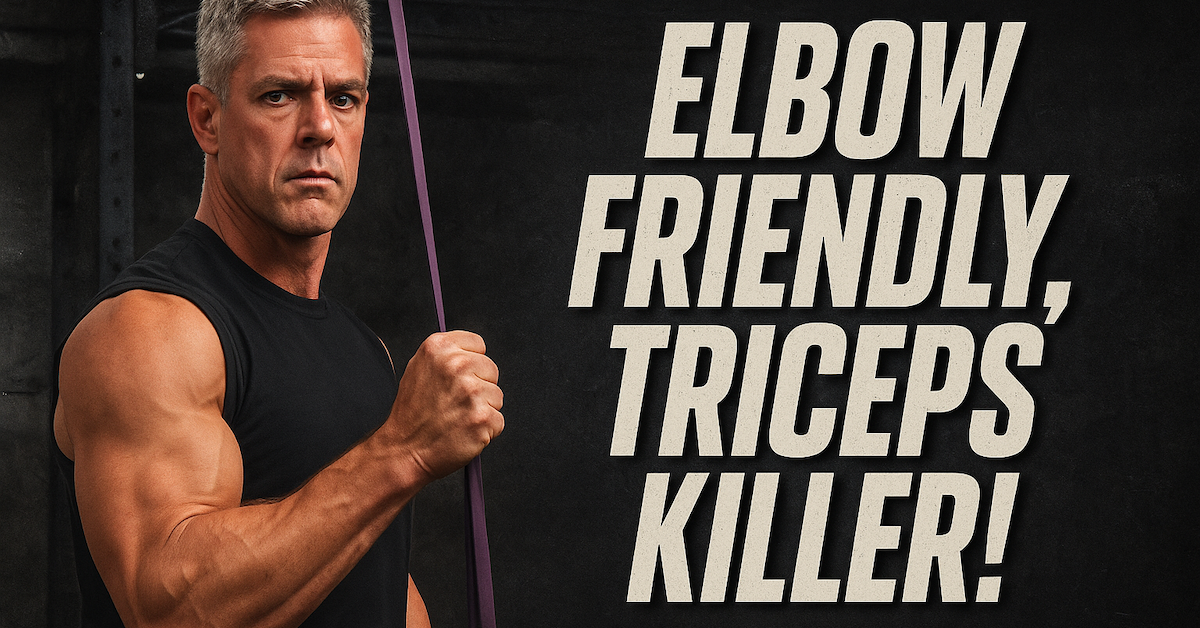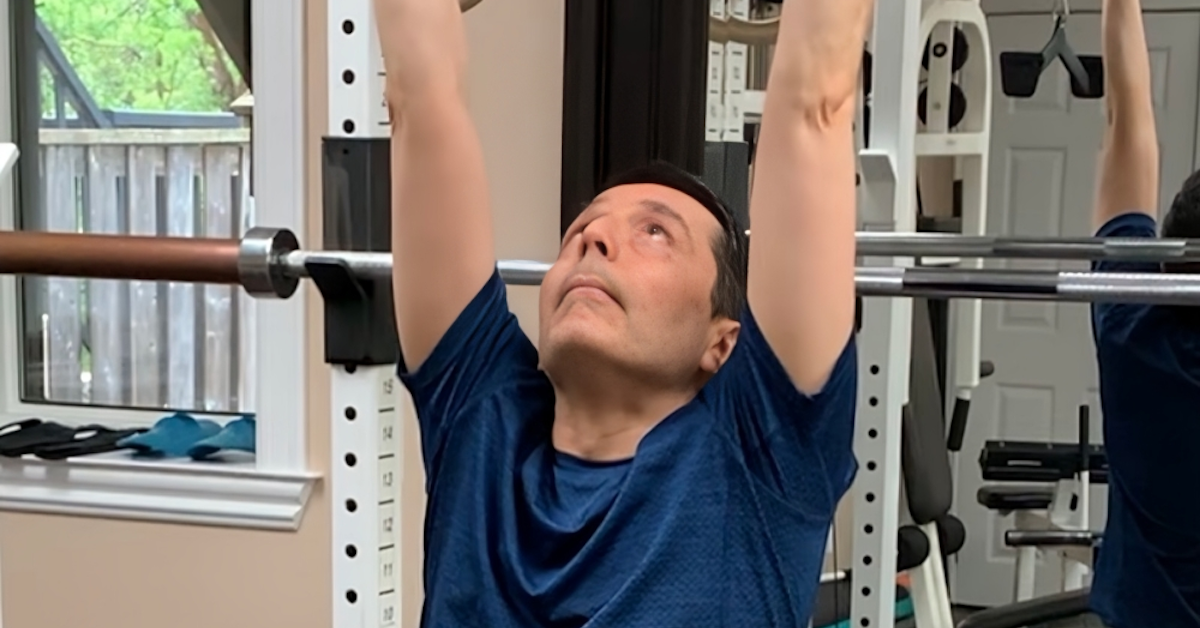The front plank is a popular exercise to promote core stability. Sure, it has its benefits—and yes, there are ways to make it more difficult—but let’s be honest: holding any static position for more than ten seconds is boring! That’s why most guys in the gym skip them altogether.
Instead of holding a front plank for a full minute or more, here’s a better option: perform something more challenging, hold it for up to ten seconds, and repeat for multiple reps with short rest in between. By the end, you’ll accumulate a full minute or more of total time under tension—without the boredom.
That’s where Ab 45s and the Reclining Field Goal come into play. These two movements deliver a much more intense static contraction than the standard front plank, and you don’t need to hold each rep for more than the number of fingers on your hands. In fact, use those fingers to count!
Ab 45s
I first came across this exercise in Underground Secrets to Faster Running by Barry Ross. No matter how strong you think your core is, Ab 45s will humble you!
Lie on your back with your knees bent and hook your feet under something stable that won’t move—like a machine, a pair of heavy dumbbells, or even a partner holding your feet down. Get your butt as close to your heels as possible. Extend your arms fully overhead and keep them in line with your torso throughout the set.
Raise your head and trunk up to a 45-degree angle, bringing your arms along with you (again, keeping them fully extended and aligned with your torso). Hold that position for a solid 5-second count, then lower back to the floor. Take a breath and repeat.
Build up to 5 sets of 5 reps with 5-second holds, then work toward 10-second holds per rep.
Reclining Field Goal
If starting from the bottom up is too tough, try going from the top down with an exercise I now call the Reclining Field Goal.
I discovered this movement in Nelson Montana’s e-book The Bodybuilding Truth. According to Montana, sit-ups and leg raises are far more effective at working the hip flexors than the abdominals. He emphasizes that the abs respond best to contraction, not movement—and that they’re taxed more during efforts to stabilize.
You’ll understand what he means once you try this.
Sit on the ground with your knees bent at 90 degrees and your feet flat. Tuck your chin into your chest, round your back, and grasp the outside of your knees. Lean back until your arms are straight—keeping your chin tucked and back rounded the entire time.
Then, slowly raise your arms until they’re pointed straight overhead. If balance is an issue, slide your feet out a bit. The closer your feet are to your hips, the harder the movement becomes.
Shoot for 10–12 reps, holding each contraction for 5–10 seconds. This one can be done anywhere, anytime—and it’s tougher than it looks!
⚠️ Cramping is common with isometric exercises. If you start to cramp—even if you’re hydrated—stop and rest. Don’t try to push through it. Ramp things up gradually over time.
Superman Back Extension
A perfect antagonist to the two ab movements above is the Superman Back Extension. Perform it on a back hyperextension bench or glute-ham raise (GHR) machine.
Just like the previous exercises, extend your arms fully overhead and keep them aligned with your torso. Raise your upper body until it’s parallel to the ground and hold for a strict 5-second count. Lower under control and repeat.
Use the same loading parameters as the Reclining Field Goal—10–12 reps with 5–10 second holds.
Programming Tips
These exercises are great finishers. You can:
- Superset one of the ab exercises with the Superman Back Extension.
- Alternate between an ab exercise one day and the back extension the next.
- Or just pick one at the end of your regular workout to reinforce core strength and posterior stability.
Whichever approach you choose, you’ll appreciate the challenge and the results. And best of all—you won’t be bored.

Standing Band Pressdowns: The Joint-Friendly Triceps Builder
If you want bigger, stronger arms but struggle with elbow pain or can’t seem to get the right triceps activation

Target Your Rear Delts Like Never Before
If you’ve struggled to feel your rear delts working—or to fill in that rear delt gap—this variation of the bent-over

Leo’s Chin-Up Journey (Day 1): From Zero to Hero
Can’t Do a Chin-Up? Neither Could Leo… But That’s About to Change. Leo started training with me back in September.
follow
Error: No feed with the ID 2 found.
Please go to the Instagram Feed settings page to create a feed.
